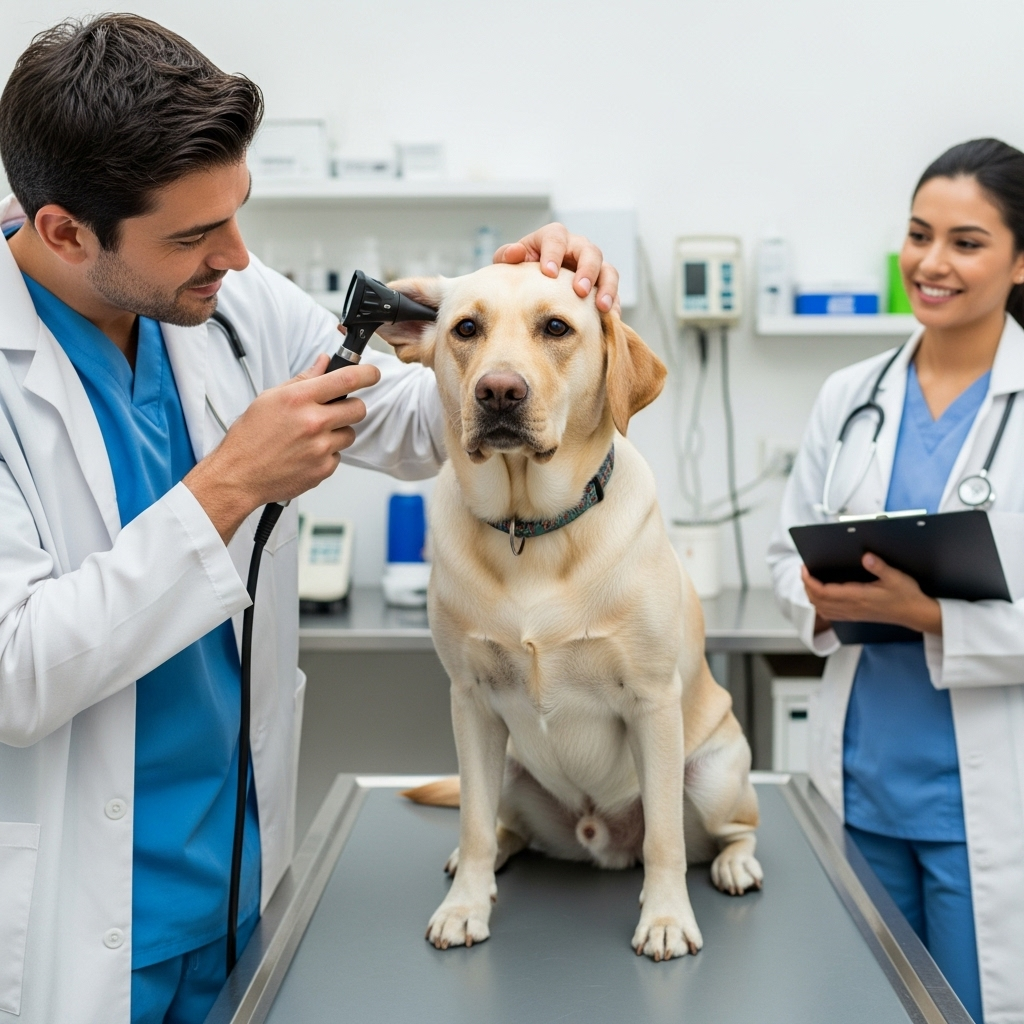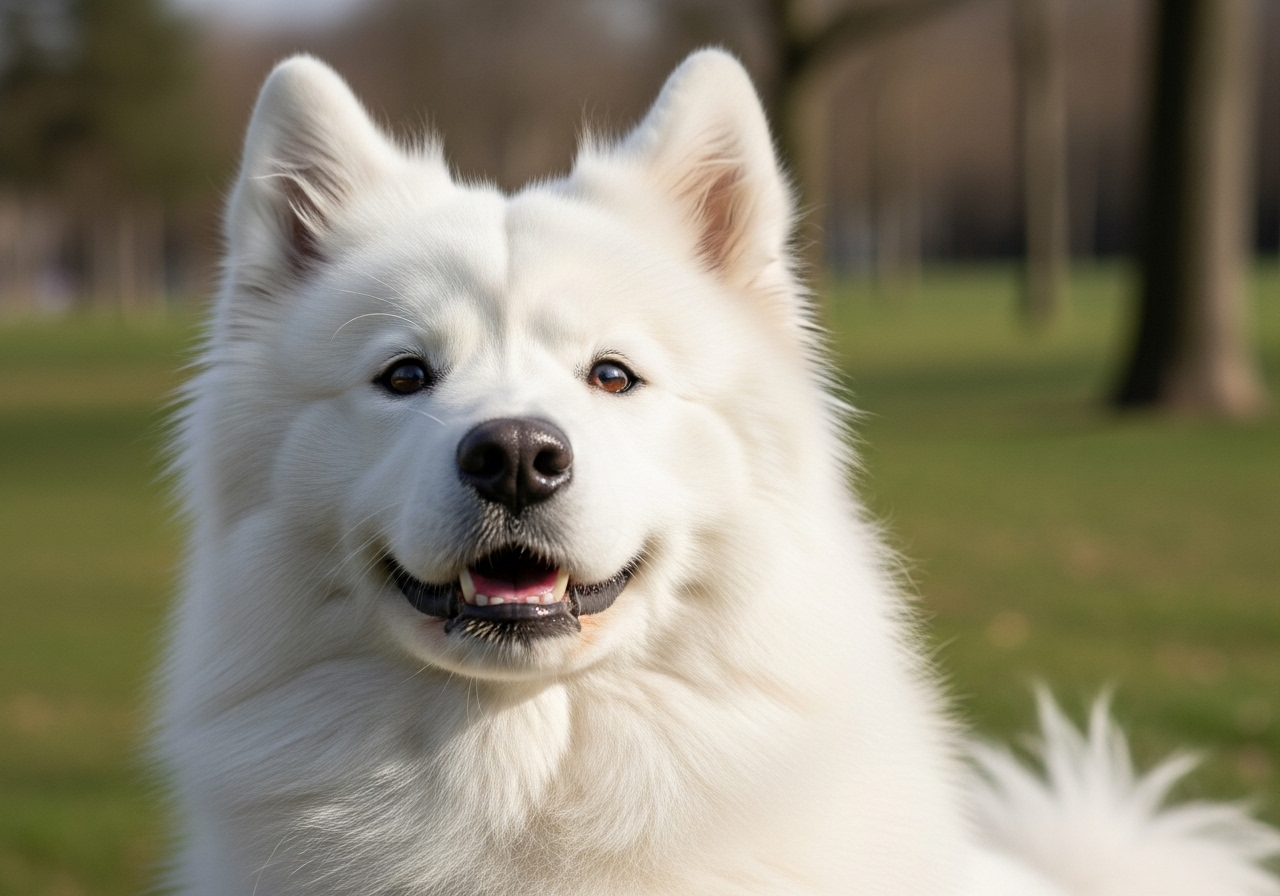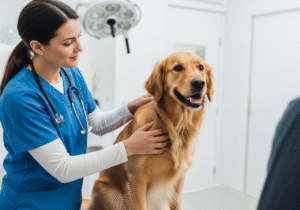Medical Disclaimer: This article is for informational purposes only and does not constitute medical advice. If you are concerned about your dog’s health or a persistent dog head tilt, please consult a licensed veterinarian immediately.
Key Takeaways
A dog head tilt is often a normal, endearing behaviour related to hearing and vision. Dogs tilt their heads to better locate the source of a sound or to see past their muzzles. However, a persistent or sudden dog head tilt, especially when combined with other symptoms like dizziness, stumbling, or eye-flicking, can be a sign of a serious medical condition. The most common medical causes are ear infections and vestibular disease, which affects the body’s balance system. If you notice any concerning signs, it’s crucial to see your vet for a proper diagnosis and treatment.
Table of Contents
The Endearing Mystery: Why We Love a Dog’s Head Tilt
You can also visit: https://doglifeexpert.com/separation-anxiety-in-dogs-powerful-ways-to-cure/

There are few things more heartwarming than the curious, quizzical dog head tilt. It’s a behaviour that melts our hearts and often earns an immediate “Aww!” It’s a silent question, a moment of deep concentration that we, as owners, interpret as a sign of intelligence and connection. This simple gesture seems to amplify the bond we share, making our dogs appear more human and empathetic as they hang on our every word. This charming quirk is one of the most beloved canine behaviours.
A Sign of Engagement and Empathy
When your dog tilts their head while you’re speaking, it’s a powerful sign that they are trying to understand you. They are focusing intently, processing your tone and looking for familiar cues. In our clinic in Ottawa, I often see owners’ faces light up when their puppy exhibits its first dog head tilt during an exam. It’s a moment of pure communication, even if no words are exchanged.
It’s All in the Ears: How Hearing Shapes the Head Tilt
While we love to think of the dog head tilt as purely emotional, its primary function is deeply rooted in auditory science. Dogs have an incredible sense of hearing, far superior to ours, and the head tilt is a key tool they use to make sense of the sounds around them.
Pinpointing Sound with Precision
A dog’s brain can calculate the minuscule difference in the time it takes for a sound to reach each ear, which helps them pinpoint a sound’s location. By adjusting the position of their ears, they can create a more accurate “sound map” of their environment. Research published in journals like Hearing Research has long explored how animals use head movements to localize sounds effectively. Tilting the head changes the orientation of the ear canals (pinnae), helping them triangulate where that squeaky toy or rustling treat bag is coming from.
A Personal Anecdote: The Case of the Crinkling Wrapper
I remember a Beagle patient named Barney who had the most pronounced head tilt I’d ever seen. His owner was worried it might be a medical issue. During the exam, I quietly crinkled a treat wrapper in my pocket. Instantly, Barney’s head snapped to the side, his ears working like radar dishes. It was clear his dog’s head tilt was simply his intense focus on a favourite sound. We ruled out any medical problems, and his owner left reassured that Barney was just a world-class listener.
More Than Just Listening: The Visual Connection
Hearing isn’t the only sense involved. For some dogs, the adorable tilt is also about getting a better view. Think about how a dog’s muzzle, depending on its size and shape, can obstruct its line of sight.
Clearing Their Line of Sight
A study published in PLOS ONE explored how a dog’s facial anatomy affects its field of vision. For dogs with longer muzzles, tilting their head can be a simple way to move their nose out of the way and get a clearer view of our faces and expressions. They are trying to read our lips and facial cues, and that charming dog head tilt gives them a better vantage point. So, when your dog cocks its head, it might just be trying to get a better look at the person it loves.
When a Cute Quirk Becomes a Medical Concern: Pathological Head Tilts

While most instances of a dog head tilt are harmless, it’s crucial to know when this behaviour signals a medical problem. A pathological head tilt is different; it’s persistent, involuntary, and often accompanied by other worrying symptoms.
Vestibular Disease: The Most Common Culprit
The vestibular system, located in the inner ear and brain, is responsible for balance and spatial orientation. When this system is disrupted, it can cause a dramatic and sudden dog head tilt. The Merck Veterinary Manual describes this condition as often being intensely disorienting for the animal.
- Peripheral Vestibular Disease (Ear-Related): This is the most common form and is caused by issues in the inner or middle ear. It often comes on suddenly and can look quite severe, but the prognosis is generally good with proper treatment.
- Central Vestibular Disease (Brain-Related): This form is more serious as it involves the brainstem. It’s usually caused by tumours, infections, or inflammation affecting the central nervous system. The symptoms are often more severe, and the prognosis is more guarded.
The Sneaky Dangers of Ear Infections (Otitis)
A simple ear infection (otitis externa, media, or interna) is one of the leading causes of a pathological dog head tilt. If an outer ear infection is left untreated, it can spread to the middle and inner ear, disrupting the delicate structures of the vestibular system. According to Blackwell’s Five-Minute Veterinary Consult: Canine and Feline, a thorough otoscopic exam is fundamental when a dog presents with a head tilt to rule out inflammation or infection deep within the ear canal.
At-Home Checklist: 5-Minute Triage for Your Dog’s Head Tilt
If you notice a sudden dog head tilt, stay calm and run through this quick checklist before calling your veterinarian.
- Check for Other Symptoms: Is the head tilt isolated, or is your dog also stumbling, walking in circles, nauseous, or having rapid, darting eye movements (nystagmus)?
- Look at the Ears: Is there any redness, discharge, or odour coming from the ears? Does your dog yelp or shy away when you gently touch near their ears?
- Assess Their Balance: Ask your dog to walk a short distance. Are they leaning to one side? Do they seem dizzy or uncoordinated (ataxic)?
- Note the Duration: Was it a fleeting, cute tilt in response to a sound, or has the dog head tilt been present for more than an hour and is constant?
- Consider Their History: Does your dog have a history of ear infections? Are they older dogs, which makes idiopathic vestibular disease (“old dog” vestibular syndrome) more common?
If you answer “yes” to any of these questions, it’s time to call your vet.
What to Expect at the Vet: Diagnosing the Head Tilt

When you bring your dog in for a persistent head tilt, we perform a systematic evaluation to find the cause.
The Physical and Neurological Exam
First, we conduct a thorough physical, paying close attention to the ears with an otoscope. Next, a neurological exam is essential. As detailed in the Saunders Manual of Small Animal Practice, this involves a series of tests to assess your dog’s balance, coordination, and cranial nerves. Observing your dog’s gait and checking for nystagmus helps us determine if the issue is peripheral (ear-related) or central (brain-related), which is a critical step in forming a diagnosis.
Diagnostic Tests and Potential Costs in Canada
Depending on the initial findings, we may recommend further diagnostics. Here’s a table of potential tests and their estimated costs in Canada. Prices can vary significantly based on your location and clinic.
| Diagnostic Test | Purpose | Estimated Cost (CAD) |
| Ear Cytology | To check for bacteria or yeast in the ear canal. | $50 – $90 |
| Blood Work | To check for underlying systemic disease or infection. | $150 – $300 |
| X-Rays (Skull) | To look for issues with the middle ear bones (bulla). | $300 – $600 |
| MRI / CT Scan | To get a detailed look at the brain and inner ear. | $2,500 – $5,000 |
4 Simple Ways to Protect Your Dog’s Hearing and Balance

- Routine Ear Cleaning: Gently clean your dog’s ears regularly with a vet-approved solution. This helps prevent wax buildup and allows you to spot early signs of infection.
- Dry Ears After Swimming: Moisture in the ear canal is a breeding ground for bacteria and yeast. Always gently dry your dog’s ears after they’ve been swimming or had a bath.
- Address Allergies: Food and environmental allergies are a common underlying cause of recurring ear infections. Work with your vet to manage any allergies your dog may have.
- Stay Current on Wellness Checks: Regular veterinary check-ups are the best way to catch potential problems, including ear infections, before they become severe enough to cause a pathological dog head tilt.
Frequently Asked Questions (FAQs) About a Dog’s Head Tilt
Is a dog head tilt always a sign of an ear infection?
Not at all. Most of the time, it’s a completely normal behaviour related to localizing sound or improving vision. An ear infection is a common medical cause, but the behavioural dog head tilt is far more frequent.
Can anxiety cause a dog to tilt its head?
While anxiety can cause many unusual behaviours, a persistent head tilt is not typically one of them. Anxiety is more likely to manifest as pacing, panting, or destructive behaviour. A constant tilt is almost always a sign of a medical issue affecting the vestibular system.
Why does my puppy tilt its head so much?
Puppies are constantly learning about the world, and their brains are working hard to process new sounds and sights. A frequent dog head tilt in a puppy is usually a sign of intense curiosity and concentration as they try to make sense of their environment.
Should I go to the emergency vet for a head tilt?
If the dog head tilt is sudden, severe, and accompanied by other neurological signs like loss of balance, falling over, vomiting, or uncontrolled eye movements, it’s best to seek emergency veterinary care. These can be signs of a serious problem that requires immediate attention.
Conclusion: Cherishing the Quirk, Respecting the Sign
The dog head tilt will forever remain one of the most endearing and communicative gestures our canine companions offer us. It’s a window into their curious minds, a sign that they are deeply engaged with our world. As pet parents, our job is to cherish these charming quirks while also staying vigilant. By understanding the difference between a curious tilt and a cry for help, we can ensure our beloved friends stay balanced, healthy, and happy for years to come. That adorable dog head tilt is a conversation. Sometimes it’s just a question, but other times, it’s a vital message we need to hear.





Pingback: Calming Anxious Dogs: 10 Proven Techniques That Work Fast